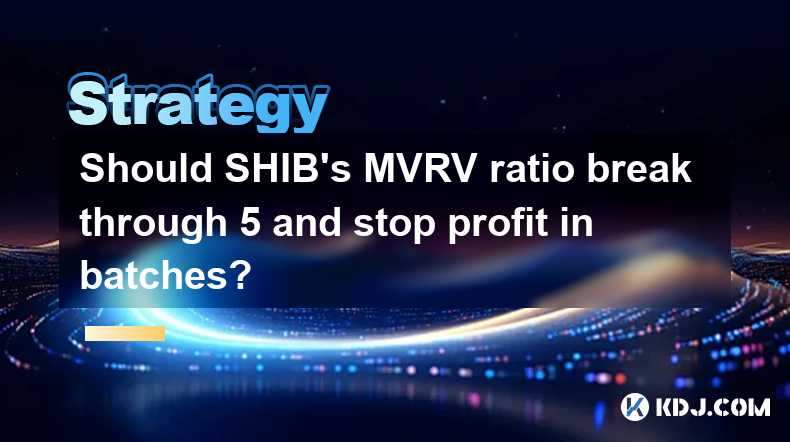-
 Bitcoin
Bitcoin $84,384.8183
-1.07% -
 Ethereum
Ethereum $1,575.4217
-2.16% -
 Tether USDt
Tether USDt $1.0000
0.01% -
 XRP
XRP $2.0513
-1.44% -
 BNB
BNB $587.7666
-0.46% -
 Solana
Solana $136.1987
-1.90% -
 USDC
USDC $0.9999
-0.01% -
 TRON
TRON $0.2449
1.47% -
 Dogecoin
Dogecoin $0.1531
-3.16% -
 Cardano
Cardano $0.6115
-1.84% -
 Chainlink
Chainlink $13.1143
2.54% -
 UNUS SED LEO
UNUS SED LEO $9.3289
0.19% -
 Avalanche
Avalanche $19.3767
-1.94% -
 Toncoin
Toncoin $2.9937
0.90% -
 Stellar
Stellar $0.2413
-1.97% -
 Shiba Inu
Shiba Inu $0.0...01238
1.50% -
 Hedera
Hedera $0.1638
-1.14% -
 Sui
Sui $2.0935
-2.40% -
 Bitcoin Cash
Bitcoin Cash $332.2596
-0.98% -
 Polkadot
Polkadot $3.8775
3.68% -
 Hyperliquid
Hyperliquid $17.3658
-3.92% -
 Litecoin
Litecoin $76.0310
0.32% -
 Dai
Dai $1.0000
0.00% -
 Bitget Token
Bitget Token $4.3896
-3.25% -
 Ethena USDe
Ethena USDe $0.9993
0.01% -
 Pi
Pi $0.6275
-2.84% -
 Monero
Monero $216.5762
1.82% -
 Uniswap
Uniswap $5.2230
-0.81% -
 Pepe
Pepe $0.0...07465
1.17% -
 Aptos
Aptos $4.9923
2.61%
How can mining income be improved by choosing a high-value currency strategy?
Profitable cryptocurrency mining requires a multifaceted strategy: prioritizing currencies with price appreciation potential, diversifying across algorithms, optimizing hardware efficiency, and strategically selecting mining pools to maximize returns while mitigating market volatility.
Mar 16, 2025 at 06:55 pm

How Can Mining Income Be Improved by Choosing a High-Value Currency Strategy?
Key Points:
- Understanding Value Metrics: Mining profitability isn't solely about hash rate; it hinges on the interplay of cryptocurrency price, mining difficulty, energy costs, and hardware efficiency. A "high-value" strategy prioritizes currencies with a strong potential for price appreciation and favorable mining economics.
- Diversification Across Algorithms: Focusing on a single coin exposes miners to significant risk. Diversifying across different mining algorithms (e.g., SHA-256, Scrypt, Ethash) mitigates the impact of algorithm-specific changes in difficulty and profitability.
- Market Research and Forecasting: Continuous market analysis is crucial. Identifying emerging cryptocurrencies with promising technology, strong community support, and potential for mass adoption is vital for long-term profitability.
- Hardware Optimization and Efficiency: Investing in efficient mining hardware is paramount. Understanding the power consumption and hash rate of different ASICs (Application-Specific Integrated Circuits) and GPUs (Graphics Processing Units) is crucial for maximizing returns.
- Strategic Pool Selection: Choosing the right mining pool significantly impacts your earnings. Factors to consider include pool fees, payout frequency, pool size, and geographic location (to minimize latency).
- Risk Management and Adaptability: The cryptocurrency market is volatile. A robust strategy incorporates risk mitigation techniques, including diversifying across coins and algorithms, and the ability to adapt to market shifts quickly.
1. Understanding Value Metrics Beyond Hashrate:
Mining profitability is not simply a matter of raw hash rate. While a high hash rate contributes to your share of block rewards, it's only one piece of the puzzle. A truly high-value currency strategy requires a deeper understanding of several interconnected factors:
- Cryptocurrency Price: The most obvious factor. A currency with a high and steadily increasing price will generate significantly higher revenue even with a relatively low hash rate compared to a currency with a low price and high hash rate. Price fluctuations introduce volatility, highlighting the importance of risk management. Predicting future price movements, however, is inherently challenging and requires careful market analysis. This necessitates keeping abreast of news, technological developments, and regulatory changes affecting the chosen cryptocurrency.
- Mining Difficulty: This metric reflects the computational power currently dedicated to mining a specific cryptocurrency. As more miners join the network, the difficulty increases, making it harder to mine blocks and reducing individual rewards. A high-value strategy involves identifying currencies where the difficulty increase is relatively manageable, allowing for sustained profitability despite growing competition. This requires constant monitoring of the network hash rate and understanding the factors that influence it, such as the introduction of new mining hardware or shifts in miner participation.
- Energy Costs: Electricity consumption is a major expense for miners. High-value currencies should be those where the revenue generated significantly outweighs the energy costs, ensuring a positive net profit. This requires careful consideration of your geographical location and access to affordable and reliable energy sources. Miners in regions with low electricity prices have a clear advantage, and optimizing energy efficiency through hardware selection and cooling solutions is crucial.
- Hardware Efficiency: The efficiency of your mining hardware (ASICs or GPUs) directly impacts profitability. A high-value currency strategy prioritizes coins that are effectively mined by your existing hardware or by hardware that offers a favorable return on investment (ROI). This involves researching the optimal hardware for specific algorithms and understanding the trade-offs between hash rate, power consumption, and upfront cost. Regularly evaluating the ROI of your hardware and adapting to new, more efficient models is also vital for maintaining a competitive edge.
The interplay of these factors determines the overall profitability of mining a particular cryptocurrency. A high-value currency strategy seeks to optimize these factors to maximize returns.
2. Diversification Across Algorithms:
Focusing all mining efforts on a single cryptocurrency, regardless of its current value, is inherently risky. A diversified approach across different mining algorithms drastically reduces the impact of unforeseen events.
- Algorithm-Specific Vulnerabilities: Changes in the mining algorithm can render existing hardware obsolete or significantly reduce its profitability. A specific algorithm might become more susceptible to ASICs, making it less profitable for GPU miners. Diversification across various algorithms (e.g., SHA-256, Scrypt, Ethash, Equihash, etc.) ensures that changes affecting one algorithm don't cripple your entire operation.
- Market Volatility and Competition: The cryptocurrency market is incredibly volatile. A cryptocurrency that's highly profitable today might become unprofitable tomorrow due to price drops, increased mining difficulty, or the emergence of more efficient mining hardware. Diversification across algorithms allows you to shift resources to more profitable coins as market conditions change.
- Reduced Risk Exposure: Concentrating on a single coin exposes miners to significant risk. If that coin experiences a price crash or a major technological shift, the miner's entire operation could be severely affected. Diversification helps mitigate this risk, ensuring that a downturn in one area doesn't completely wipe out your profits.
- Optimal Hardware Utilization: Diversification allows for better utilization of your mining hardware. Different algorithms require different hardware, and diversifying allows you to utilize your existing hardware across multiple coins, maximizing its overall profitability.
Effective diversification requires careful research and monitoring of different algorithms, their associated cryptocurrencies, and the market dynamics influencing their profitability. This approach demands flexibility and the willingness to adapt mining strategies as market conditions evolve.
3. Market Research and Forecasting:
Identifying promising cryptocurrencies requires thorough market research and, to a degree, forecasting. This is a complex and challenging task, but it's essential for long-term profitability.
- Technological Assessment: Evaluate the underlying technology of the cryptocurrency. A strong technological foundation, offering unique features or improvements over existing technologies, often indicates a greater potential for future growth and adoption. This includes analyzing the blockchain's scalability, security, and efficiency.
- Community Analysis: A strong and active community is a positive sign. A large and engaged community can provide support, development, and marketing efforts, which are all vital for the success of a cryptocurrency. Consider factors like social media engagement, developer activity, and the overall sentiment surrounding the project.
- Adoption Potential: Assess the potential for mass adoption. Cryptocurrencies with real-world use cases and applications have a higher likelihood of long-term success. Consider factors like partnerships, integrations with existing systems, and the overall utility of the cryptocurrency.
- Regulatory Landscape: The regulatory landscape surrounding cryptocurrencies is constantly evolving. Staying informed about regulatory developments and their potential impact on different cryptocurrencies is crucial for making informed investment decisions. This involves monitoring regulatory changes at both national and international levels.
- Fundamental Analysis: Employ fundamental analysis techniques to evaluate the intrinsic value of a cryptocurrency. This involves analyzing factors such as market capitalization, circulating supply, transaction volume, and development activity.
While predicting the future price of a cryptocurrency is impossible, thorough research can significantly increase the chances of identifying currencies with a high potential for growth.
4. Hardware Optimization and Efficiency:
The efficiency of your mining hardware directly impacts your profitability. A high-value strategy focuses on maximizing this efficiency.
- ASIC vs. GPU Mining: Different cryptocurrencies are better suited to different types of hardware. ASICs (Application-Specific Integrated Circuits) are generally more efficient for mining specific cryptocurrencies, offering higher hash rates and lower power consumption compared to GPUs (Graphics Processing Units). GPUs, however, offer more flexibility, allowing you to mine a wider range of cryptocurrencies. The choice depends on your specific goals and resources.
- Power Consumption: Electricity costs are a significant expense. Choose hardware with low power consumption per unit of hash rate (measured in watts per gigahash, or W/GH). This minimizes your operating costs and maximizes your profit margin. Consider using energy-efficient cooling solutions to further reduce power consumption.
- Hash Rate and Clock Speed: A higher hash rate generally translates to higher mining rewards. However, this should be balanced against power consumption. Overclocking your hardware can increase the hash rate, but it also increases power consumption and can potentially damage the hardware. Finding the optimal balance between hash rate and power consumption is key.
- Hardware Maintenance and Upkeep: Regular maintenance, including cleaning, thermal management, and firmware updates, is crucial for ensuring the longevity and efficiency of your mining hardware. Neglecting maintenance can lead to decreased performance and potential hardware failure.
- Cooling Solutions: Efficient cooling is essential for preventing overheating and maximizing hardware lifespan. Consider using liquid cooling, efficient fans, and proper ventilation to maintain optimal operating temperatures.
5. Strategic Pool Selection:
The mining pool you choose significantly impacts your earnings.
- Pool Fees: Mining pools charge fees for their services. Choose pools with reasonable and transparent fee structures. Compare fees across different pools to find the most cost-effective option.
- Payout Frequency: Pools offer different payout frequencies, ranging from daily to weekly or even monthly. Consider your financial needs and risk tolerance when choosing a payout frequency. More frequent payouts offer greater liquidity but might involve higher transaction fees.
- Pool Size: Larger pools generally offer more consistent payouts and lower variance in earnings due to their larger share of the network hash rate. However, larger pools also mean a smaller percentage of the block rewards for individual miners. Smaller pools might offer higher rewards per share but come with greater risk due to higher payout variance.
- Pool Software and Infrastructure: Choose a pool with reliable software and infrastructure. A well-maintained pool will minimize downtime and ensure consistent payouts. Look for pools with robust monitoring systems and responsive customer support.
- Geographic Location: Consider the geographic location of the pool's servers to minimize latency. Lower latency translates to faster block propagation and potentially higher earnings.
Careful pool selection is crucial for maximizing your mining income and minimizing risks associated with inconsistent payouts and high fees.
6. Risk Management and Adaptability:
The cryptocurrency market is highly volatile. A successful mining strategy incorporates robust risk management and adaptability.
- Diversification (Reiterated): Diversification across cryptocurrencies and mining algorithms is crucial for mitigating risk. Don't put all your eggs in one basket.
- Hedging Strategies: Consider hedging strategies to protect against price fluctuations. This might involve using derivatives or other financial instruments to offset potential losses.
- Market Monitoring: Constantly monitor the cryptocurrency market for significant changes in price, difficulty, and regulatory developments. Be prepared to adjust your mining strategy based on these changes.
- Cost Management: Track your operating costs, including electricity, hardware maintenance, and pool fees. Identify areas where you can reduce costs to improve your profit margin.
- Emergency Fund: Maintain an emergency fund to cover unexpected expenses or downturns in the market. This will provide a buffer during periods of low profitability.
- Flexibility: Be prepared to adapt your mining strategy quickly to changing market conditions. This might involve switching to a different cryptocurrency, adjusting your hardware configuration, or changing your mining pool.
Adaptability is key to navigating the volatile nature of the cryptocurrency market and ensuring long-term success in cryptocurrency mining.
FAQs:
Q: What are some high-value cryptocurrencies for mining in 2024?
A: Identifying "high-value" cryptocurrencies is highly speculative and depends on various factors, including market conditions and technological advancements. Thorough research, including examining market capitalization, mining difficulty, price trends, and technological innovations, is essential before choosing any cryptocurrency for mining. Always be aware of the inherent risks involved. It's not possible to provide a definitive list as market conditions change rapidly.
Q: How do I calculate my mining profitability?
A: Mining profitability is calculated by subtracting your operating costs (electricity, hardware, pool fees) from your mining revenue (block rewards). Numerous online calculators are available that take into account factors like hash rate, electricity costs, and cryptocurrency price to estimate profitability. However, remember that these are estimations, and actual profitability can vary.
Q: Is mining still profitable in 2024?
A: The profitability of mining depends on various factors, as previously discussed. While it can be profitable, it requires careful planning, research, and risk management. The high energy consumption and competition necessitate a well-informed strategy to ensure profitability. The profitability of mining is not guaranteed and can fluctuate significantly.
Q: What are the risks associated with cryptocurrency mining?
A: Risks include: volatility in cryptocurrency prices, changes in mining difficulty, high energy costs, hardware failure, regulatory changes, and security risks (e.g., hacks, scams). Thorough research and risk management are crucial to mitigate these risks.
Q: What is the best mining hardware for high-value currency strategies?
A: The "best" hardware depends on the specific cryptocurrency being mined and its algorithm. ASICs are generally more efficient for specific coins, while GPUs offer more flexibility. Research the optimal hardware for your chosen cryptocurrency, considering factors like hash rate, power consumption, and cost.
Disclaimer:info@kdj.com
The information provided is not trading advice. kdj.com does not assume any responsibility for any investments made based on the information provided in this article. Cryptocurrencies are highly volatile and it is highly recommended that you invest with caution after thorough research!
If you believe that the content used on this website infringes your copyright, please contact us immediately (info@kdj.com) and we will delete it promptly.
- XRP Gains Traction as a Payment Option in Latin America, New Statistics Show
- 2025-04-20 23:25:15
- PancakeSwap's CAKE Token Is Up Over 30% This Month
- 2025-04-20 23:25:15
- Metaplanet's Bitcoin Strategy Has Shook Up the Market by Adding Another 150 BTC to Its Treasury
- 2025-04-20 23:25:13
- Render (RNDR) price prediction: Will the altcoin climb higher from the $3 demand zone?
- 2025-04-20 23:25:13
- XRP and bitcoin (BTC) price action resembles a compressed spring
- 2025-04-20 23:15:14
- Retail Investors Have Been Unwinding Their Crypto Positions
- 2025-04-20 23:15:14
Related knowledge

Is it a risk that SHIB's derivatives position is 3 times that of the spot?
Apr 20,2025 at 12:35am
Is it a risk that SHIB's derivatives position is 3 times that of the spot? The cryptocurrency market is known for its volatility and high-risk nature, and Shiba Inu (SHIB) is no exception. One of the metrics that traders and investors closely monitor is the ratio of derivatives to spot positions. SHIB's derivatives position being three times that of the...

What does SHIB's Cardano coefficient below 0.3 indicate?
Apr 19,2025 at 08:00am
What does SHIB's Cardano coefficient below 0.3 indicate? The Cardano coefficient, often used within the cryptocurrency community, is a metric that helps investors and analysts understand the correlation between different cryptocurrencies. When it comes to SHIB (Shiba Inu) and its Cardano coefficient falling below 0.3, this indicates a relatively low cor...

Is SHIB's TVL suddenly increasing by 20% a positive signal?
Apr 20,2025 at 08:07am
The sudden increase of SHIB's TVL (Total Value Locked) by 20% has sparked a lot of interest and speculation within the cryptocurrency community. TVL is an important metric that represents the total amount of assets locked in a DeFi protocol, indicating the level of user engagement and trust in the platform. In this article, we will explore whether this ...

Should SHIB's MVRV ratio break through 5 and stop profit in batches?
Apr 20,2025 at 11:35pm
The MVRV (Market Value to Realized Value) ratio is a key metric used in the cryptocurrency market to assess whether a particular asset is overvalued or undervalued. For Shiba Inu (SHIB), a popular meme coin, understanding the implications of its MVRV ratio breaking through the 5 threshold is crucial for investors looking to manage their portfolios effec...

Is the sudden decrease in liquidity of SHIB stablecoin pool dangerous?
Apr 20,2025 at 02:15pm
The sudden decrease in liquidity of the SHIB stablecoin pool has raised concerns among investors and market participants. Liquidity refers to the ability to buy or sell an asset without causing a significant price change, and a decrease in liquidity can have serious implications for the stability and functionality of a cryptocurrency ecosystem. In this ...

What to do when SHIB 1-hour level shows TD9 sequence?
Apr 20,2025 at 03:21pm
When the SHIB 1-hour level shows a TD9 sequence, it's important for traders to understand what this technical indicator means and how they can use it to inform their trading strategies. The TD9, or Tom DeMark Sequential, is a popular tool among traders for identifying potential reversals in price trends. In this article, we will explore what to do when ...

Is it a risk that SHIB's derivatives position is 3 times that of the spot?
Apr 20,2025 at 12:35am
Is it a risk that SHIB's derivatives position is 3 times that of the spot? The cryptocurrency market is known for its volatility and high-risk nature, and Shiba Inu (SHIB) is no exception. One of the metrics that traders and investors closely monitor is the ratio of derivatives to spot positions. SHIB's derivatives position being three times that of the...

What does SHIB's Cardano coefficient below 0.3 indicate?
Apr 19,2025 at 08:00am
What does SHIB's Cardano coefficient below 0.3 indicate? The Cardano coefficient, often used within the cryptocurrency community, is a metric that helps investors and analysts understand the correlation between different cryptocurrencies. When it comes to SHIB (Shiba Inu) and its Cardano coefficient falling below 0.3, this indicates a relatively low cor...

Is SHIB's TVL suddenly increasing by 20% a positive signal?
Apr 20,2025 at 08:07am
The sudden increase of SHIB's TVL (Total Value Locked) by 20% has sparked a lot of interest and speculation within the cryptocurrency community. TVL is an important metric that represents the total amount of assets locked in a DeFi protocol, indicating the level of user engagement and trust in the platform. In this article, we will explore whether this ...

Should SHIB's MVRV ratio break through 5 and stop profit in batches?
Apr 20,2025 at 11:35pm
The MVRV (Market Value to Realized Value) ratio is a key metric used in the cryptocurrency market to assess whether a particular asset is overvalued or undervalued. For Shiba Inu (SHIB), a popular meme coin, understanding the implications of its MVRV ratio breaking through the 5 threshold is crucial for investors looking to manage their portfolios effec...

Is the sudden decrease in liquidity of SHIB stablecoin pool dangerous?
Apr 20,2025 at 02:15pm
The sudden decrease in liquidity of the SHIB stablecoin pool has raised concerns among investors and market participants. Liquidity refers to the ability to buy or sell an asset without causing a significant price change, and a decrease in liquidity can have serious implications for the stability and functionality of a cryptocurrency ecosystem. In this ...

What to do when SHIB 1-hour level shows TD9 sequence?
Apr 20,2025 at 03:21pm
When the SHIB 1-hour level shows a TD9 sequence, it's important for traders to understand what this technical indicator means and how they can use it to inform their trading strategies. The TD9, or Tom DeMark Sequential, is a popular tool among traders for identifying potential reversals in price trends. In this article, we will explore what to do when ...
See all articles























































































